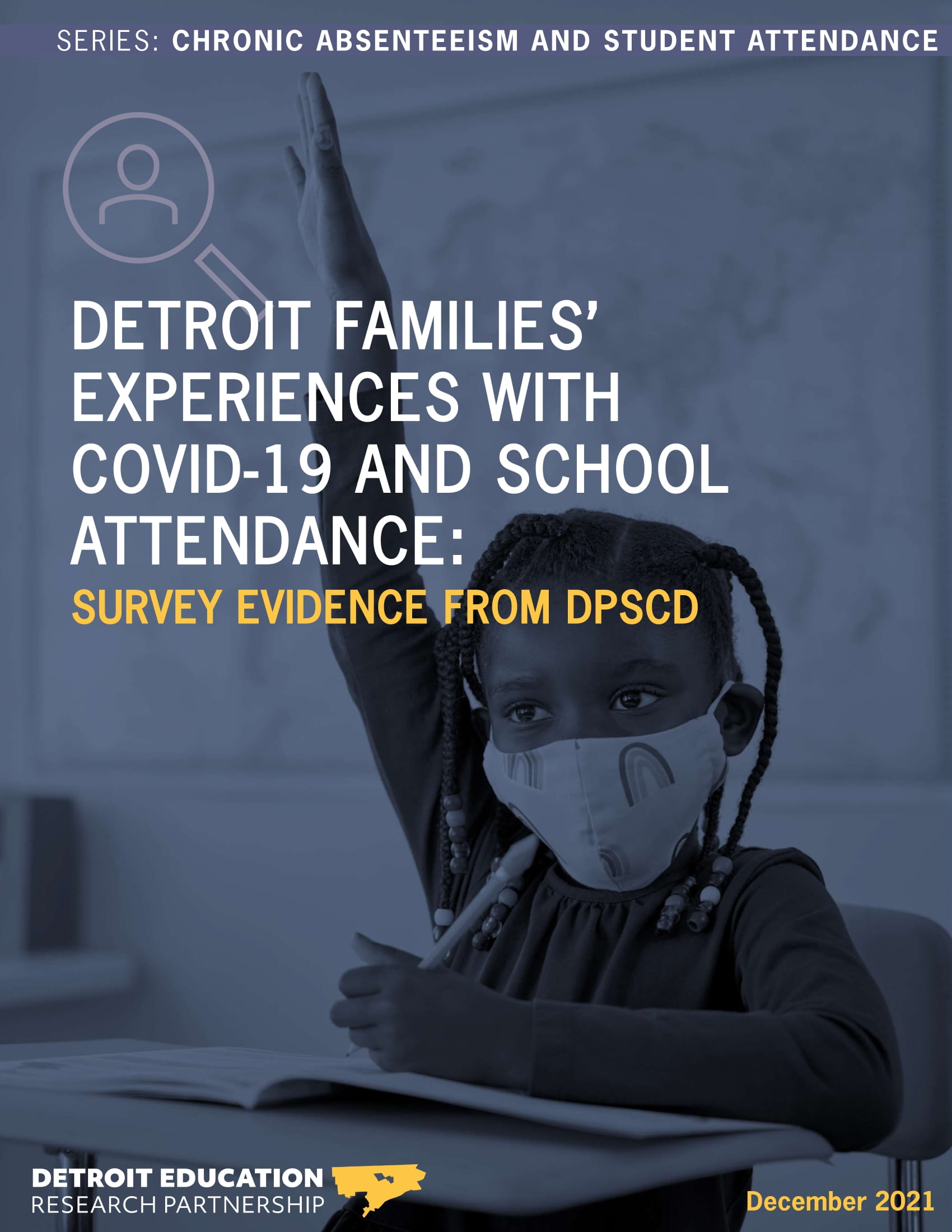Topic: COVID
How Has Attendance in Michigan Changed Since the COVID-19 Pandemic?
This brief provides a closer look at how chronic absenteeism and average attendance rates have changed in Michigan since the pandemic.

Enrollment, Mobility, and Attendance in Detroit
This presentation for the State of Michigan's CEPI Longitudinal Data System Advisory Board showcased research on Detroit student attendance and mobility during the COVID-19 pandemic.

Research and Resources to Support Students During the COVID-19 Pandemic
Every School Day Counts Detroit is a community-led collective impact effort to improve the conditions that impact student attendance and engagement in Detroit. Since the start of the COVID-19 pandemic, we have worked with partners across the city to identify student needs, provide social supports, and ensure that students had the technology and other resources they needed to engage school during school closures. We gathered these research findings and resources to support school leaders as they prepare to meet students’ needs during the school year, whether students will be in face-to-face instruction or in distance learning.

Detroit Parents’ Attitudes on COVID-19 Prevention Strategies in School
This report summarizes key findings from a representative survey of Detroit parents of K-12 students fielded in January 2022. By examining Detroit parents’ support for quarantine, masking, vaccine mandates, and remote learning policies in schools alongside specific pandemic-related hardships, we were able to identify the degree to which these barriers shaped a given household’s support for each policy. We hope this research informs the development of school health measures that will ensure equitable educational access as the pandemic continues into this school year.

Detroit Families’ Experiences with COVID-19 and School Attendance
How much school students attend is a powerful indicator of their wellbeing and a strong predictor of their future success in school. During the first full school year of the COVID-19 pandemic (2020-21), most Detroit students attended school online and many experienced significant challenges at home and school. This research report summarizes the key findings from a representative survey of Detroit Public Schools Community District (DPSCD) families at the end of that school year. By linking survey responses to students’ attendance records, we were able to identify how experiences during the pandemic and socioeconomic circumstances in general shaped attendance during this critical school year.

Why do Detroit Students Miss School? Implications for Returning to School
This report documents the reasons why Detroit students miss school, based on interviews with parents and high school students in 2020. Transportation was by far the most frequent and pervasive barrier to attendance that we heard from families. Yet, issues with getting to school were more complex than immediate access to transportation. They emerged from a combination of unreliable or inconsistent availability of transportation, weak social networks, parents’ work schedules, unsafe conditions, and more. Health issues, acute and chronic physical health issues in particular, but also mental health and parent health issues, created barriers to attendance. Parents expressed a strong understanding that missing school jeopardized students’ learning, and they went to great lengths to get their children to school. Parents also weighed serious trade-offs between attendance, safety, health, and family income, reflecting the unjust conditions they face.

Detroit Students’ Experiences During the Novel Coronavirus Pandemic
We interviewed 29 DPSCD high school students in May and June 2020 about their experiences with COVID-19, how often and in what ways they participated in distance learning, and what their perspectives were about school in the fall. This research brief highlights several key findings that have implications for how students can be supported both during and after the pandemic.



